#cnc prototype
Explore tagged Tumblr posts
Text
cnc prototype manufacturer in China,1 pc to 1000 pcs order.
One of your best cnc prototype manufacturer,we can provide you with precision machining of any number of plastic and metal cnc prototype parts in China.Our specializations include CNC milling, turning, EDM, wire cutting and surface grinding. We have 3-axis CNC machine tools, 4-axis CNC machine tools and 5-axis CNC machining centers. Our 3-axis CNC machines can output maximum spindle speeds of up…

View On WordPress
0 notes
Text
How CNC Machining Can Be Done on Irregular Shapes?
CNC Production machining is an important tool in production. It can be used to machine irregular shapes, making them more precise and accurate. This is an especially useful tool for producing parts that have a lot of detail or need to fit tightly together. The procedure also mentioned above that depicts how CNC machining can be used for irregular shapes.
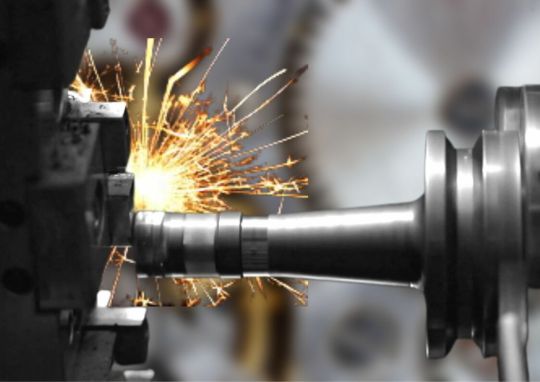
#CNC Produce#CNC Production Machining#Precision Machining Parts#CNC Precision Machine#CNC Production#Machined Plastic Parts#CNC Turned Parts#Custom Machined Parts#CNC Prototype
0 notes
Text

does anyone want to play shopping and dressing up with me through tumblr polls ????
i.e
then once selected it'll get more niche till u guys decide what i get?? could be cute ........

#bd//sm#t4t nsft#t4t ns/fw#trans bd/sm#trans#queer nsft#queer ns/fw#dyke nsft#t4t puppy#d0m/sub#dumb puppy#trans puppy#puppy sub#wet and needy#pfft tumblr tags r so funny#transsexual#genderqueer nsft#gay#dyke#cnc k!nk#emo nsft#prototype poll kind of#i will find money somewhere
7 notes
·
View notes
Text
Non-standard CNC machining parts
#design#business#autos#prototyping#prototype#prototype machining#rapid prototyping#cnc machining#precision machining#machining parts#cnc precision machining#cnc precision#cnc machining service#cnc services#cnc metal machining#metal machining#cnc metal processing#metal processing#high precision
2 notes
·
View notes
Text

We provide precision CNC machining services, CNC Milling and Turning (3 axis, 4 axis, 5 axis), can manufacture complex and multi-structure plastic and metal parts.
#cncmachining#5 axis machining#cnc milling services#cnc machining parts#rapid prototyping#precision machining
2 notes
·
View notes
Text
Maintenance Tips for Your CNC Turning Machine by MechPlus China
As a leading CNC turning machine manufacturing, MechPlus China understands the importance of proper maintenance to ensure precision and efficiency. Regular upkeep not only extends the machine's lifespan but also maximizes productivity and quality. Here are essential maintenance tips from MechPlus China to keep your CNC turning machine running smoothly and efficiently.
Keeping your CNC turning machine in top condition is crucial for optimal performance. Regular maintenance not only extends the machine's lifespan but also ensures precision and efficiency in your operations. Here are essential maintenance tips to keep your CNC turning machine running smoothly.
Daily Inspection and Cleaning
Start each day with a thorough inspection of your CNC turning machine. Check for any signs of wear and tear, and ensure all components are in good working order. Clean the machine daily to remove any debris, chips, and coolant residue. This prevents buildup that can affect performance and accuracy.
Lubrication
Proper lubrication is vital for the smooth operation of your CNC turning machine. Lubricate all moving parts as recommended by the manufacturer. This includes the spindle, guideways, and ball screws. Regular lubrication reduces friction, prevents wear, and extends the machine’s life.
Coolant Maintenance
Maintaining the coolant system is essential for the longevity of your CNC machine. Regularly check the coolant level and concentration. Replace or refill the coolant as needed. Also, clean the coolant tank and filters to avoid contamination that can damage the machine and workpieces.
Alignment and Calibration
Ensure that your CNC turning machine is properly aligned and calibrated. Misalignment can lead to inaccuracies in your machining processes. Regularly check and adjust the machine’s alignment and calibration according to the manufacturer’s guidelines. This ensures precision in your operations.
Check Electrical Components
Inspect the electrical components of your CNC turning machine regularly. Look for any loose connections, worn-out wires, or faulty switches. Address any electrical issues immediately to prevent machine downtime and potential safety hazards.
Monitor Machine Vibration
Excessive vibration can lead to poor machining quality and damage to your CNC turning machine. Monitor the machine for any unusual vibrations or noises during operation. Identify and address the source of the vibration to maintain optimal performance.
Regular Software Updates
Keep your CNC machine’s software up to date. Manufacturers often release updates that improve functionality and fix bugs. Regularly updating the software ensures your machine operates efficiently and takes advantage of the latest technological advancements.
Tool Maintenance
Regularly inspect and maintain the cutting tools used in your CNC turning machine. Sharp and well-maintained tools are crucial for high-quality machining. Replace worn or damaged tools promptly to ensure precise and efficient operation.
Preventive Maintenance Schedule
Implement a preventive maintenance schedule for your quick response machining tool. Follow the manufacturer’s recommended maintenance intervals for all components. Regular preventive maintenance helps identify potential issues before they become major problems, reducing downtime and repair costs.
Training and Safety
Ensure that all operators are properly trained in the maintenance and operation of the CNC turning machine. Regular training updates and adherence to safety protocols are crucial for preventing accidents and ensuring smooth operations.
Document Maintenance Activities
Keep detailed records of all maintenance activities performed on your CNC turning machine. Documenting maintenance helps track the machine’s condition over time and provides valuable information for troubleshooting and repairs with all types of customized machining parts.
In conclusion, regular maintenance of your CNC turning machine is essential for its longevity and performance. By following these tips, you can ensure your machine operates efficiently, reducing downtime and improving the quality of your machining processes. Implement these maintenance practices to keep your CNC turning machine in optimal condition.
#Prototyping solutions#SLA Rapid Prototyping manufacturing#SLS Rapid machining manufacturing#5 Axis CNC machining manufacturing#3D metal printing manufacturing
2 notes
·
View notes
Text
The Importance of High-tech Rapid Prototyping
In the industrial industry, precision is not only desirable—it is essential. Consider a situation in which parts of a jet engine are even marginally machined incorrectly or misaligned. The repercussions can be disastrous and might cause the engine to fail in midair. Precision becomes the key to success in sectors like aerospace, automotive, and medical where safety and dependability are non-negotiable. Put simply, it's the capacity to manufacture parts or components that precisely conform to given dimensions, tolerances, and quality requirements. It takes state-of-the-art equipment, painstaking attention to detail, and highly competent operators to achieve this degree of accuracy. This is the sweet spot for Precision CNC Machining.
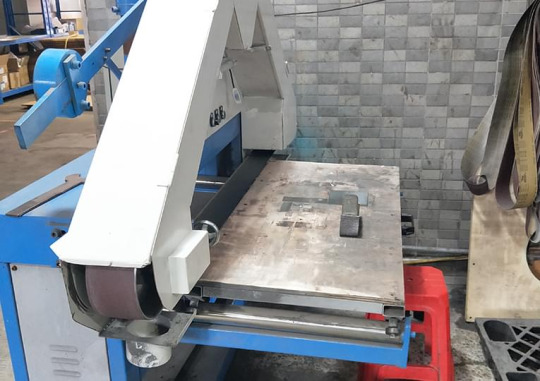
So how precisely can CNC machining accomplish such high precision levels?
Computerized Control: Advanced computer software is the brains of CNC machining, translating digital design requirements into exact motions and orders for the milling tools. This removes the possibility of human error and guarantees the highest level of precision in each cut, drill, and mill.
Superior Quality Equipment: Modern spindles, tools, and cutting implements that are designed to provide exact results are standard on CNC machines. These devices may operate at extremely tight tolerances, which are sometimes expressed in microns, guaranteeing an accurate reproduction of even the minutest features.
Consistency: The ability of CNC machining and High-tech Rapid Prototyping to manufacture similar components with little variance is one of its main advantages. A machine program that has been developed and tuned may be repeated endlessly with reliable outcomes. In fields where stability and dependability are critical, this degree of constancy is priceless.
Advanced Techniques: Multi-axis milling, turning, EDM (Electrical Discharge Machining), laser cutting, and other state-of-the-art methods are all included in CNC machining. With unmatched accuracy and efficiency, manufacturers can handle complicated geometries and materials thanks to these procedures.
Quality Assurance: CNC systems frequently include integrated quality control mechanisms including automated inspections, feedback loops, and real-time monitoring in addition to accurate machining. This reduces waste and rework by guaranteeing that any deviations from the intended standards are quickly identified and fixed. It is impossible to exaggerate the value of accuracy in production. Precision by Precision CNC Machining Manufacturer plays a crucial role in today's competitive economy, as it ensures everything from satisfying regulatory requirements and consumer expectations to assuring product performance and dependability.
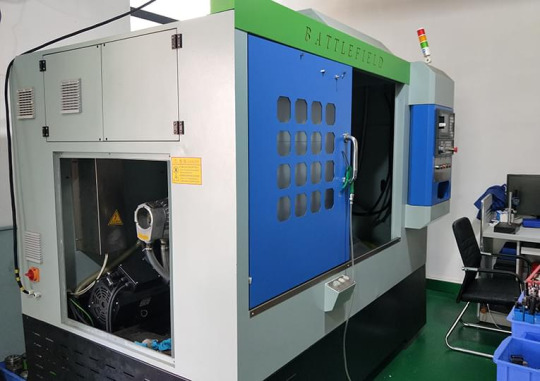
Follow our Facebook and Twitter for more information about our product
#High-tech Rapid Prototyping#Precision CNC Machining#Precision CNC Machining Manufacturer#CNC Machining Manufacturer Company
2 notes
·
View notes
Text
Using the Potential of CNC Machining
In the constantly changing field of product development, efficiency, accuracy, and innovation are always sought after. CNC Prototype Machining is the core of this endeavor; this revolutionary technology has completely changed the way prototypes are imagined, created, and executed.
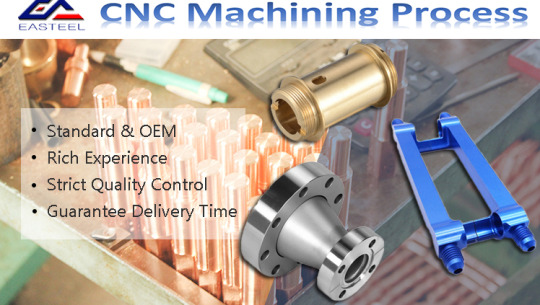
Redefining Precision: The Advantage of CNC
The unmatched accuracy of CNC prototype machining is its foundation. CNC machines are outfitted with the newest technology and are directed by exact CAD/CAM instructions to do jobs with minuscule accuracy. With CNC machining, every detail is painstakingly and precisely carved, whether it be for drilling precise holes or sculpting complex designs.
Innovation Acceleration: Accelerating the Development Cycle
Speed is crucial in the fast-paced environment we live in today. The days of protracted production schedules and never-ending revisions are over thanks to CNC prototype machining. CNC machines help engineers and designers to iterate quickly and bring things to market more quickly than ever before by optimizing the prototype process. This shortened development cycle encourages innovation and experimentation while simultaneously shortening time-to-market.
Unleashing Versatility: From Idea to Actuality
The adaptability of prototype CNC Machining China is among its most impressive features. CNC machines can easily mold a wide range of materials into working prototypes, whether they are made of metal, plastic, wood, or composite materials. The options are endless, ranging from sophisticated consumer electronics to delicate aircraft components.
Filling the Void: From Concept to Manufacturing
In addition to prototypes, CNC machining is essential for bridging the gap between production and design. CNC machines facilitate the process of moving from concept to mass manufacture by producing parts that are ready for production and of superior quality. Prototypes are guaranteed to be workable solutions prepared for practical implementation, not only functional mock-ups thanks to this smooth connection.
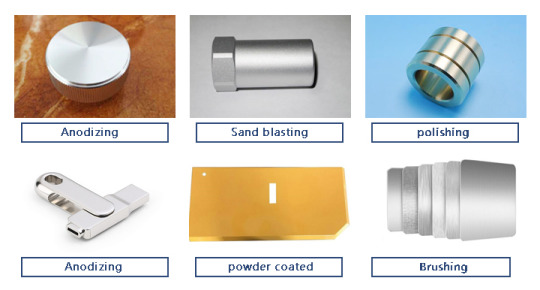
Promoting Innovation in All Sectors
Prototype CNC Machining has a significant influence that goes much beyond the boundaries of a particular sector. CNC machines are pushing innovation across a wide variety of sectors, from consumer products and medical devices to aerospace and automobiles. The future of manufacturing is being shaped by CNC prototype machining, which is at the forefront of innovations such as supply chain revolutions, improved product performance, and the ability to enable new design patterns.
#CNC Machining#CNC Machining process#CNC Machining process China#CNC Machining Techniques#CNC Prototype Machining#CNC Prototype Machining China#CNC Machining China
2 notes
·
View notes
Text
Rapid Prototyping for Custom Designs
CNC machining prototyping allows you to rapidly produce custom parts for testing and validation. Using state-of-the-art CNC technology, we can create prototypes with precision and efficiency. This service is ideal for industries such as aerospace, medical, and consumer products, providing a fast and cost-effective way to test and refine your designs. Whether you're working with complex geometries or simple parts, we deliver prototypes that meet your exact specifications with quick turnaround times.
0 notes
Text
0 notes
Text
Progressive Stamping Die

Enhance your manufacturing process with Let's Escape Together's progressive stamping die services. Our expert team delivers precision-engineered dies for efficient, high-volume production. Experience consistent quality and accuracy in every part, from simple to complex designs. With advanced technology and industry expertise, we provide reliable solutions tailored to your needs, ensuring cost-effective and seamless manufacturing.Read more : https://nagualmetal.en.alibaba.com/productgrouplist-919732885/Progressive_Stamping_Die.html?spm=a2700.shop_plgr.88.10
#cnc machining service#sheet metal fabrication#progressive stamping die#prototype fabrication#plastic injection mold
0 notes
Text
CNC precision machining parts
#design#autos#business#prototyping#prototype#prototype machining#cnc machining#rapid prototyping#precision machining#machining parts#metal machining#cnc metal processing#cnc metal fabrication#cnc metal process#cnc metal machining#metal processing#cnc precision machining#cnc precision
2 notes
·
View notes
Text
Rapid Prototype Machining: Accelerating Innovation and Product Development

In today's fast-paced production environment, businesses are always searching for ways to get products to market more quickly, precisely, and with fewer delays. Rapid prototype machining is one of the fundamental technologies that makes this possible. With this cutting-edge technique, businesses can produce high-quality prototypes in a timely and economical manner, validating designs, running testing, and refining concepts before committing to large-scale manufacturing.
What is Rapid Prototype Machining?
Rapid prototype machining is the method of swiftly producing working prototypes from digital designs utilizing CNC (Computer Numerical Control) machining techniques. This method, which focuses on speed, quality, and flexibility instead of time-consuming and expensive traditional prototyping processes, enables firms to translate concepts into actual parts in a matter of days.
The part is first represented as a CAD (Computer-Aided Design) model, which is subsequently converted into machine-readable code. This code creates a very accurate physical replica of the digital model by instructing a CNC machine to remove material from a solid block.
Why is it important to use rapid prototype machining?
Modern product development heavily relies on rapid prototype machining. This process is essential for innovation and competitive advantage for the following reasons:
Quicker Cycles for Product Development
Time is frequently of importance when developing new products. A company can enter the market more quickly if it can go from concept to prototype quickly. Quick prototype machining shortens lead times so that several design revisions can be completed quickly.
Accuracy and Precision
CNC machining is known for its exceptional precision because it can produce prototypes for items with tight tolerances. Rapid prototype machining offers precise representations for testing and validation by ensuring that the prototype closely resembles the digital model.
Economical Prototyping
Rapid prototype machining can drastically lower the cost of making prototypes by eliminating the requirement for pricey tooling and moulds, particularly when several design iterations are required. While thoroughly testing their concepts, businesses can avoid the large upfront expenses associated with traditional manufacturing methods.
Material Flexibility
One of quick prototype machining's main benefits is the variety of materials that can be employed. Engineers have the freedom to test their designs using the same materials used in the final production because CNC machines can work with various materials, including metals, plastics, composites, and more.
Operational Models
Quick prototype machining can produce functioning prototypes, in contrast to some other quick prototyping techniques that yield aesthetically pleasing or conceptual models. Businesses can confirm the shape and function of their designs by putting these prototypes through mechanical, thermal, or stress testing.
Rapid Prototype Machining Process
Let's dissect the main procedures involved in rapid prototype machining so that you can comprehend how it operates completely:
Creating the Prototype
A digital design is first created using CAD software to start the process. Every aspect of the prototype, such as its measurements, tolerances, and material requirements, must be included in this model. Engineers can swiftly optimize and change the design to ensure it satisfies the needs of the project.
Changing to a Format Compliant with CNC
After the design is finished, it is translated into a format, usually G-code, that CNC machines can understand. This code tells the machine what materials to cut, how to move, and what steps to take to build the prototype.
Choosing the Content
The right material to select depends on the project. A wide variety of materials can be machined with CNC, including plastics like ABS and polycarbonate and metals like steel and aluminium. The need for testing and validation frequently determines the material selected for the prototype.
CNC Work
The CNC machine then starts the machining process. Material is removed to obtain the required shape to form a billet, which is a solid block. Depending on the part's complexity, CNC machines can carry out a wide range of operations, including milling, turning, drilling, and grinding.
The following Processing
After being machined, the prototype may undergo further post-processing procedures like sanding, polishing, or surface finishing to enhance its appearance or functionality. Prototypes might also occasionally be painted or coated.
Examining and Assessing
After the prototype is finished, it undergoes a thorough testing process to ensure it meets performance and design requirements. Functionality, stress, and environmental testing may be part of this.
Rapid Prototype Machining's Advantages for Companies
Several significant benefits are provided by rapid prototype machining to companies in a range of industries:
Validation of Design
Before beginning large-scale manufacturing, firms can validate their designs with the help of working prototypes. This lowers the possibility of expensive errors and ensures that the finished product lives up to client expectations.
Shorter Time to Market
Rapid prototype machining makes faster product development cycles possible, helping businesses launch new items swiftly. This can be a big help in sectors like technology or the automotive industry, where time is a competitive advantage.
Personalization and Adaptability
The versatility of CNC machining allows for producing prototypes and custom parts with minute details and complicated geometries. Without having to spend a lot of money on costly retooling, businesses can also experiment with new materials and design variations.
Reduced Prices
Rapid prototype machining lowers upfront costs by eliminating special equipment or mould requirements, making it an affordable option for small-batch or single-part prototyping.
Improved Interaction with Stakeholders
Businesses can more successfully convey their designs to partners, investors, and clients when they have physical prototypes. Before production begins, tangible models can clearly display the finished product to obtain funds or feedback.
Uses for Machining Rapid Prototypes
Many industries employ rapid prototype machining to increase design accuracy and speed product development. Typical uses for them include:
Automobile Sector
Rapid prototype machining is used in the automotive industry to develop parts, including engine and transmission assemblies and interior components. By putting prototypes through real-world testing, manufacturers can decrease production risks and increase performance.
Aerospace and Defense
Aerospace businesses use quick prototype machining to create high-precision parts for aeroplanes, satellites, and defence systems. CNC-machined prototypes are crucial for evaluating materials, functionality, and safety prior to large-scale manufacturing.
Medical Equipment
Rapid prototype machining is a technology medical device makers use to design and test novel items, including surgical equipment, implants, and diagnostic devices. With prototypes, medical items can undergo thorough testing in clinical settings, ensuring they adhere to regulatory requirements.
Electronics for Consumers
The fast-paced consumer electronics industry uses rapid prototype machining to create innovative items like wearables, home appliances, and smartphones. Before mass production, functional prototypes assist businesses in improving their designs and streamlining their production procedures.
Industrial Tools
Industrial equipment manufacturers can create specialized parts and machinery using rapid prototype machining. Businesses can also enhance overall productivity, minimize production downtime, and optimize designs by testing functioning prototypes.
FAQs
Which materials are suitable for cutting prototypes quickly?
Many materials can be machined into rapid prototypes, including polymers like ABS, nylon, and polycarbonate and metals like titanium, steel, and aluminium. The material selected is determined by the intended use of the prototype and the design specifications.
What is the duration of quick prototype machining?
The complexity of the design and the material being used determine how long and how quickly prototype machining takes. Prototyping can typically be completed in a few days to a week, which is far faster than using more conventional approaches.
Compared to 3D printing, what are the advantages of rapid prototype machining?
While complicated geometries or conceptual models are frequently produced by 3D printing, quick prototype machining provides higher precision, more material flexibility, and the capacity to produce functional parts. Additionally, CNC-machined prototypes are more appropriate for field testing.
Is the machining of rapid prototypes appropriate for small businesses?
Yes, quick prototype machining is a very useful tool for small firms. It provides an affordable means of validating concepts, testing designs, and refining goods prior to mass production. It enables companies to develop quickly without significant upfront investments in moulds or tooling.
Summary
The machining of rapid prototypes has completely changed how companies approach new product development. Because of their fast, precise, affordable prototypes, companies can innovate more effectively and launch goods quickly. Whether you are in the consumer electronics, automotive, aerospace, or medical sectors, quick prototype machining may greatly enhance your design process, lower costs, and lessen the hazards involved in large-scale manufacturing.
0 notes
Text
Factors to Consider When Choosing Materials with CNC Rapid Prototyping
In this article, factors to consider in CNC Rapid Prototyping will be outlined to further assist businesses make the best decision for all the project needs.
When working on a new product, CNC fast prototyping is an excellent approach to quickly turn your ideas into actual products. This approach is popular among designers and engineers due to its precision, speed, and flexibility. However, one of the most important considerations you will have to make is which material to use for your prototype.
The material you choose might have a significant impact on the quality of your prototype.
1. What’s the Prototype For?
Before you begin selecting materials, you must first determine exactly what your prototype will be used for. Is it intended to be an operational version that can withstand pressure and testing, or is it only a visual model to showcase the design? The aim of your prototype will influence your material selection.
Working Prototypes: If your prototype needs to function like the final product, you’ll need strong, durable materials like aluminum or steel.
Visual Prototypes: If the prototype is just for looks, materials like ABS plastic or acrylic, which are easy to machine and look good, might be better.
2. How the Material Performs
Think about how the material will perform in your prototype. Here are some key factors:

Choosing materials that match your prototype’s needs will help ensure it works well in real life.
3.Ease of Machining and Cost
Not all materials are easy to machine, and this can affect both the quality of your prototype and how much it costs to make.
Ease of Machining: Some materials, like aluminum, are easy to work with and can be cut precisely with a smooth finish. Others, like harder metals or brittle plastics, might be more difficult to machine, which can increase costs and time.
Cost: Materials can vary greatly in price. While metals like titanium offer great performance, they are more expensive than alternatives like aluminum or plastic. Balancing cost with your project’s needs is crucial, especially if you’re on a budget.
4.Surface Finish and Post-Processing
The surface finish is especially important if your prototype needs to look good or fit together with other parts precisely.
Surface Finishing Requirements: Some materials, such as acrylic or aluminium, can have an appealing surface directly off the CNC machine. Others may require further effort, such as sanding, polishing, or coating, to appear their finest.
Post-processing: Consider how the material will respond to subsequent treatments. Some materials may stretch or weaken during finishing operations, while others may improve with further stages.
5.Environmental Impact and Sustainability
Today, sustainability is more important than ever. When choosing materials, think about their environmental impact.
Recyclability: Using recyclable materials like aluminum and steel can help reduce waste and make your project more eco-friendly.
Material Source: Consider where the materials come from. Are they renewable, or do they require a lot of energy to produce? Choosing sustainable materials can help lower the environmental impact of your project.
6.Availability of Materials
Finally, think about how easy it is to get the materials you want. Some special materials might take longer to source or might not be readily available, which could slow down your project. Choosing materials that are easy to get can help keep your project on track.
Conclusion:
Choosing the right material is an important aspect of successful CNC fast prototyping. You could contribute to your project succeed by making sound choices based on the purpose of your prototype, the material's performance, ease of machining, cost, surface polish, environmental effect, and availability. Whether you're making an actual product or a visual mockup, choosing the correct material helps guarantee that your prototype accomplishes precisely what you want it to do.
0 notes